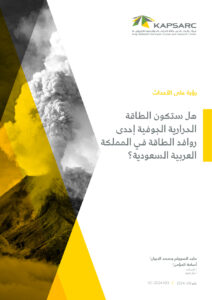ماجد زميل أول في كابسارك، يركز على أمن الطاقة والجيوسياسية وقوانين وأنظمة الهيدروكربونات. ويمتلك خبرة تزيد عن 15 عامًا في صناعة النفط والغاز في شركتي شيفرون وأرامكو السعودية، وتضمنت خبرته المحاكاة، والنمذجة، وإدارة الأصول، وتقييم الاحتياطيات، وتطوير حقول النفط، والتقنيات الثورية، والتخطيط.
وهو حاصل على درجة البكالوريوس في هندسة البترول من جامعة تولسا في الولايات المتحدة، ودرجة الماجستير في هندسة البترول من جامعة تكساس أي أند إم، ودرجة الماجستير في علوم الجيولوجيا والهندسة من المعهد الفرنسي للبترول. كما حصل في عام 2021 على درجة الماجستير في الاقتصاد والسياسات العامة من جامعة بوردو.





















